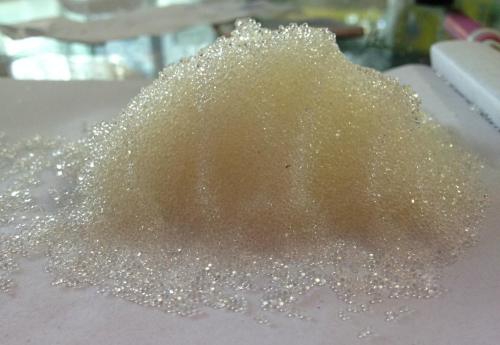成都森格尔环保科技有限公司
Chengdu senge environmental protection technology co.LTD
Consultation Hotline:02865357899
Production, Sales and Development of Ion Exchange Resin
成都森格尔环保科技有限公司
Chengdu senge environmental protection technology co.LTD
Consultation Hotline:02865357899
Production, Sales and Development of Ion Exchange Resin
Contact person: Manager Liu
Location: 028-65357899
Mobile phone: 15680686111
Mailbox: chengdu@sgrhb.com
Fax: 028-65357899
Email: chinaresin@sgrhb.com
Website: www.sgrhb.com
Website : en.sgrhb.com
Address: 79 Jiujin Street, Wuhou District, Chengdu City, Sichuan Province
After all the active groups in ion exchange resins are converted into exchangeable ions, the total exchange capacity of these exchanged ions is called total exchange capacity. Ion exchange resin is composed of classification name, skeleton (or gene) name and basic name. The pore structure is divided into two types: gel type and large pore type. All macroporous resins with physical pore structure are added "big hole" before the full name. If the classification is acidic, the word "yang" should be added before the name, while the classification is alkaline, and the word "yin" should be added before the name. Such as: macroporous strong acidic styrene cation exchange resin. Therefore, the total exchange capacity also means the total number of active groups that can act as exchangers in ion exchange resins. It has been determined.

The working exchange capacity of ion exchange resin under the actual operation (or simulation) conditions of water treatment, i. e. the exchange capacity of ion exchange resin was measured under dynamic conditions. Ion exchange resin is composed of classification name, skeleton (or gene) name and basic name. The pore structure is divided into two types: gel type and large pore type. All macroporous resins with physical pore structure are added "big hole" before the full name. If the classification is acidic, the word "yang" should be added before the name, while the classification is alkaline, and the word "yin" should be added before the name. Such as: macroporous strong acidic styrene cation exchange resin. It can be seen that the measured work exchange capacity is different under different operating conditions. There are many factors affecting the work exchange capacity, such as ion concentration of water, control index of exchange terminal, height of resin layer, exchange rate and form of exchange group, etc. In practical applications, the working exchange capacity of resin is more meaningful, but there is no fixed ratio between the complete exchange capacity and the working exchange capacity. Therefore, sufficient switching capacity cannot be used to calculate the switching capacity of the work.
There is also the equilibrium exchange capacity, that is, the exchange capacity of ion exchange resin when it reaches the exchange equilibrium state in aqueous solution. Ion exchange resins can be divided into styrene resin and acrylic resin according to their matrix types. The main properties and types of resins are determined by the types of chemical active groups in resins. Firstly, it can be divided into cationic resins and anionic resins, which can exchange ions with cations and anions in solution respectively. Cationic resins can be divided into strong acidity and weak acidity. Anionic resins can be divided into strong alkalinity and weak alkalinity.
The exchange capacity units of ion exchange resins can be expressed by gravimetric and volumetric methods. Gravimetric method refers to the exchange capacity QM (Ax+, Bx-) per unit mass of dry resin, which can be expressed by mmol/(g resin) or mol/(g resin). Volumetric method refers to the unit volume exchange capacity of wet resin QV (Ax+, Bx-), which can be expressed by mmol/(L resin) or mol/(L resin). However, it should be pointed out that the gravimetric method refers to the weight of dry resin and the volumetric method refers to the volume of wet resin after full expansion. The exchange capacity is expressed by volume method.
Chengdu Senger Environmental Technology Co., Ltd.
Record No: 蜀ICP备19000327号
Powered by Xiangyun Platform
Contact person: Manager Liu
Location: 028-65357899
Mobile phone: 15680686111
Email: chinaresin@sgrhb.com

